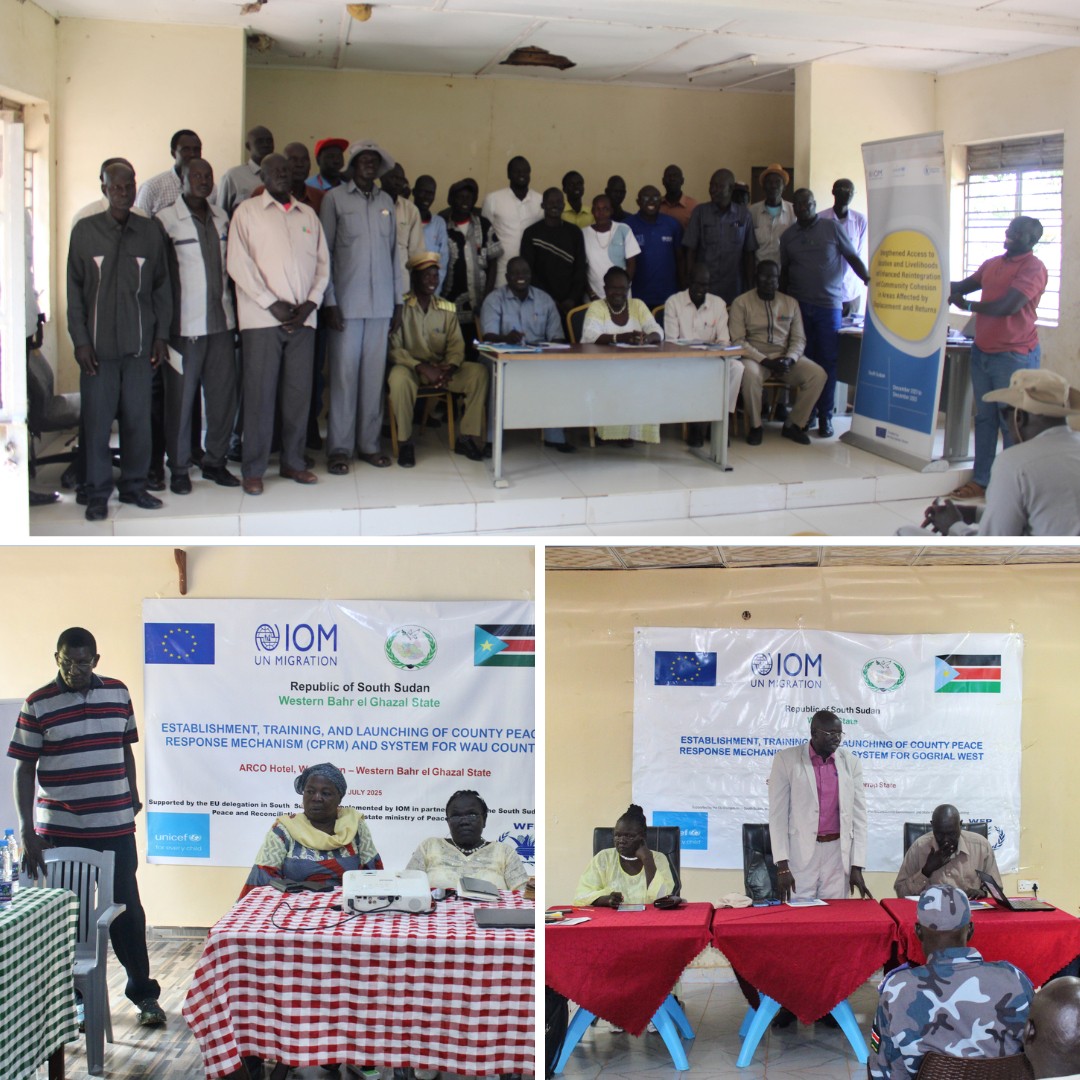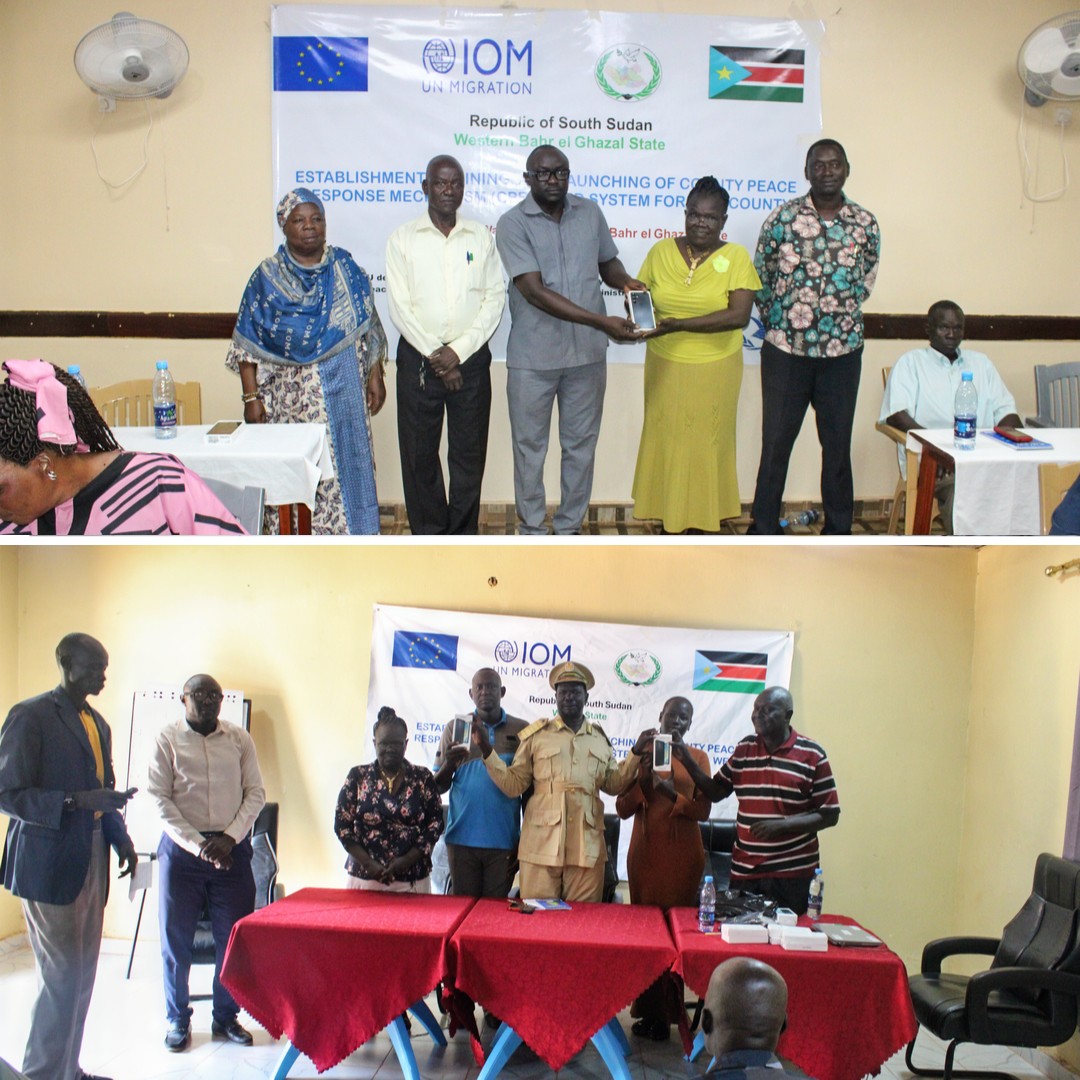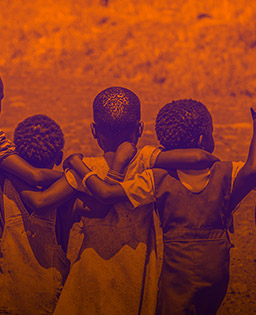
CPRM members in Twic County takes a group photo after the training. IOM representative Mr. Emmanuel giving a remark at the end of the training in Wau and Commissioner of Gogrial West County, Wek Koor Aru giving closed the training for Gogrial West in Kuajok.
Earlier this year in August, South Sudan Peace and Reconciliation Commission (SSPRC) took another step toward strengthening local peace structures. After the launch of State Early Warning mechanism called State Technical Team (STTs) in Western Bahr el Ghazal (WBGS) and Warrap State, it became evident that peacebuilding had to go deeper down to the counties and communities where tensions first arise.
That is when the need for establishment of County Peace Response Mechanisms (CPRMs) became clear. These mechanisms act as bridges, linking Bomas and payams to county authorities, counties to state leadership, and states to the national level. They make sure that an incident in a remote village does not go unnoticed but instead feeds into a wider system of response.
Training Communities to Prevent Conflict
With generous support from IOM South Sudan, SSPRC established and trained CPRMs in Wau (WBGS), Twic, and Gogrial West (Warrap State).
Each CPRM brings together 35 men and women from all walks of life: youth, women leaders, traditional chiefs, civil society activists, faith-based actors, organized forces, and persons with disabilities. Over the course of three days, these members learned how to:
- Recognize the root causes of conflict and practice resolution skills,
- Identify and document early warning indicators,
- Report incidents using the AlertMe mobile application, and
- Respond quickly and collectively to emerging threats.
At the end of the training, 10 smartphones equipped with the AlertMe app were handed over to selected members in each location. The phones went to those most familiar with digital tools, representing different payams and community organizations. These gadgets became lifelines enabling communities to send alerts directly to the national situation room and receive feedback in real time.

CPRM members given phones installed with the AlertMe mobile application for conflict reporting.
Voices from the Training
The establishment of CPRMs has been warmly welcomed by community leaders and local authorities.
In Gogrial West, County Commissioner Wek Koor Aru expressed both appreciation and a continued call for support:
“We appreciate IOM and SSPRC for this important training, and we welcome it wholeheartedly. I am happy that participants from all parts of Gogrial West are present, some traveling long distances to attend. I thank them for coming.”
He also raised ongoing community needs, noting:
“I had requested a court building in Gogrial West, but instead it was constructed in Twic. I am still requesting both a court building and a public toilet for Gogrial West Market.”
From Wau County, the Deputy Executive Director, Rezig Abdalla emphasized the community’s commitment:
“With the knowledge we have gained, we are ready to volunteer and do anything for our County.”
Madut Baak, from Conflict Resolution Committee of Warrap State reminded participants that responsibility lies with them:
“This work is for us. We don’t have the funds; that’s why IOM has come to assist us. We need to be serious and put into practice all that we have learned here for the better of our counties and our state at large.”
How CPRMs Work
When violence threatens to break out in a payam, CPRM members are often the first to hear about it. They meet, assess the situation, and try to defuse tensions. If the matter is beyond their capacity, they escalate it to the State Technical Team (STT). Once a month, they also hold early warning forums where communities openly discuss emerging issues and map out response strategies together. Each CPRM is chaired by the County Commissioner, giving the structure both authority and accountability.
A Growing Network of Local Peacebuilders
The CPRMs in WBGS and Warrap are part of a much larger effort by SSPRC’s Conflict Early Warning and Early Response Unit (CEWERU) to strengthen grassroots peace mechanisms across South Sudan.
So far, CPRMs have been established in seven states and one administrative area, covering counties in Jonglei, Lakes, Central Equatoria, Western Equatoria, Eastern Equatoria, and Greater Pibor. While most of these were supported by UNDP, the new partnership with IOM is helping expand the network into more counties and equipping them with the tools needed to function effectively.
Building Hope Through Preparedness
What makes CPRMs unique is their rootedness in the community. They are not outsiders coming in to resolve disputes they are neighbors, elders, youth leaders, and women who know the realities on the ground. Their work is already creating safer spaces where people can voice concerns, seek mediation, and prevent violence before it escalates.
With every CPRM established, South Sudan’s capacity to detect early signs of conflict and act quickly grows stronger. The journey is far from over, but one thing is clear: peace is no longer just a national agenda it is being built at the grassroots, one county at a time.


